| There is a Shaker village at Pleasant Hill about 25
miles south west of Lexington KY. The Shakers were a strict religious sect
who believed in communal living and ownership. They first came to Kentucky
in 1802 and over 500 lived here at their peak in the mid 1800s. But since
they were in the Kingdom of God on earth they must live blameless lives free
from impure thoughts and deeds. Thus they were celibate and even married
couples were separated when they joined. The children were looked after but
most eventually left. As might reasonably be expected, they have virtually
died out - there are just three elderly Shakers left, though they no longer
live here. Although they lived communally the men and women occupied
opposite sides of the houses which were mirror images. They even had
separate front doors and staircases. Up to 80 lived in the largest communal
houses, with dormitory bedrooms. | 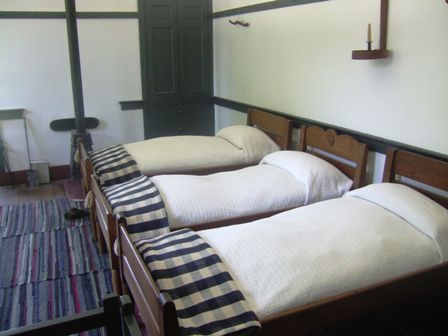 |
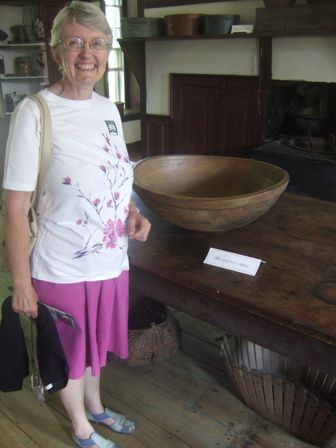 |
The Shakers were founded by Ann Lee who came from Manchester to the US in
1774. She had had a vision that Christ would reappear as a woman which
helped to drive the notion of equality. She was an illiterate mill worker
who had given birth to four children all of whom died young. Everyone
worked and although men and women were regarded as equal, they did tend to
have jobs which matched their physical attributes ie the women cooked, sewed
and laundered while the men did the heavier outdoor work. As with many of
these sects, they were noted for their woodwork which was exceptional. Jan
is always a sucker for a large wooden bowl such as the one seen here in the
communal kitchen. |
| One of the houses was set out as a museum complete
with the furniture and utensils of the period. The houses were very advanced
for the period, being built of stone and having heating in most rooms. This
was one of the reasons they were so successful in the early years. The
houses were larger and almost certainly more comfortable than the governor's
mansion and their occupants certainly lived better than most families at the
time who were living in one room shacks. Bluegrass country then was poor and
backward in many ways. | 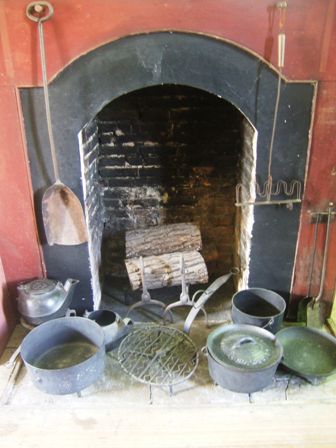 |
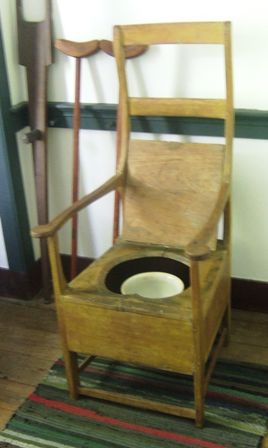 |
They had their own hospital facilities and designed a number of aids to help
the sick and injured, such as crutches and even a wooden walker. They even
had commodes at a time when a hole in the garden was the norm. There were
several of these and the woodwork was excellent. |
| With 4000 acres of good farmland they had a thriving
business which not only supported them but gave them a surplus to trade
with. One of the biggest trade items was seeds and at one time they were
amongst the largest commercial suppliers of seeds in the US. | 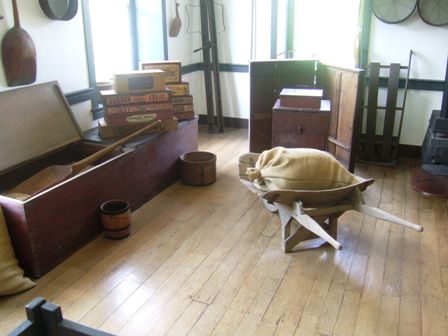 |
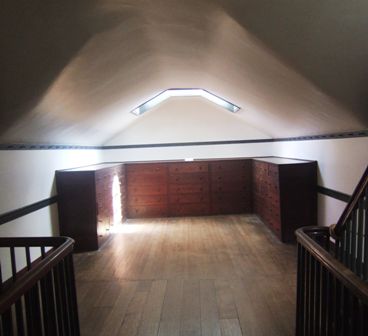 |
Today there are 14 buildings open on the site out of 34 in the village. The
communal houses are striking for their imposing balanced architecture. The
main houses were all substantial stone buildings three stories high. This is
the third floor which was used for storage. Note the beautifully made but
simple sets of drawers. Everything was also designed to be efficient - one
of their most famous items is the hook rail attached to the wall, on which
they could hang not only hats and coats but also items such as chairs so
that the floors could be cleaned much more easily. |
| The buildings feature huge central hallways and
landings which were used as communal areas during the day because they were
much cooler. On the second floor we found this superb communal seat. | 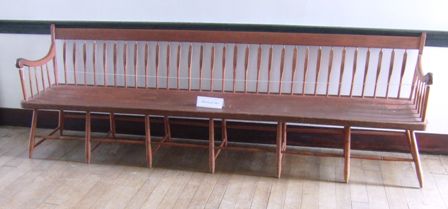 |
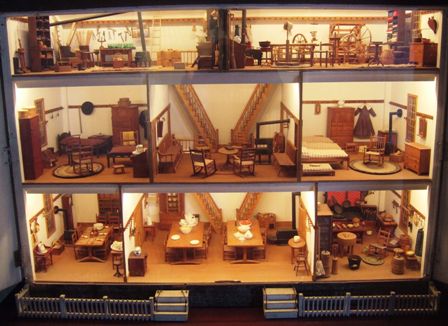 |
Although sex was forbidden once you joined, this did not prevent many
families from joining since the children were looked after and educated,
something most families would not have been able to achieve on their own.
For the children it was obviously not 'all work, no play' as evidenced by
this exquisite dolls house with all its wooden furniture. But even this
portrays Shaker principles - note the dormitory and the twin staircases,
plus the hook rails around the walls. |
| As with many similar museums there are plenty of
people on hand to enhance the experience. Song and dance was very important
to the Shakers who were quite evangelical and very southern in their
approach to praising the Lord. This lady gave us a presentation of the songs
and dances they would have done including Lord of the Dance which was
originally a Shaker tune.
She is an absolutely wonderful professionally trained singer who works at
the museum, managing all the other singers and the choirs and trying to find
time to complete her higher degree and doing research into Shaker music. She
is also trying to produce a CD. I'm sure it will do well when it comes out,
most of her audience would have bought it on the spot. | 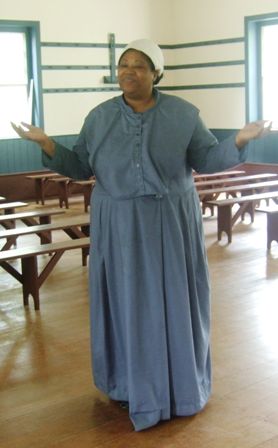 |
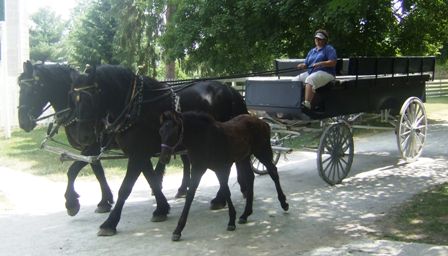 |
In keeping with the period there are the inevitable carriage rides on offer
but it was the foal being taught its future role which stole the hearts of
most visitors. |
| We had started inside the house because that is what
they said we should do (coupled with the fact it was tipping it down!). But
eventually we ventured outside. Here you see the classic mirror image design
with the separate front doors for the men and the women leading to the huge
communal hall. The limestone build (all quarried locally by the men) is
clearly in evidence. | 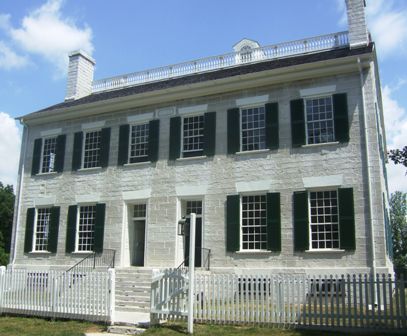 |
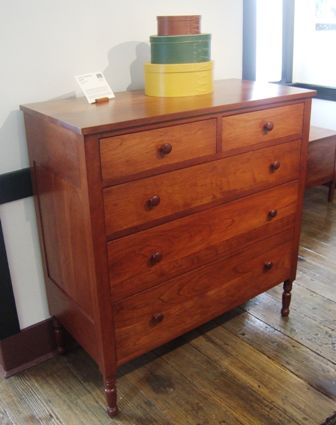 |
Another example of the beautiful yet simple styling of this chest in classic
Shaker design. |
| Out in the barn we found this antique seed sorter but
alas the local docent knew little about it. We were particularly interested
because the design is almost identical to one we have in our barn in France
(and about the same age). | 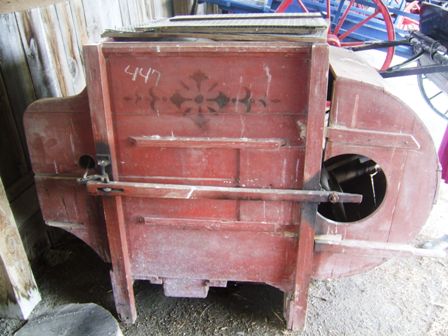 |
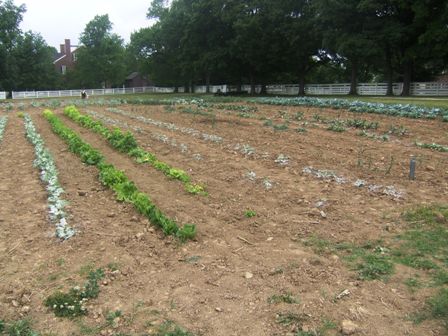 |
There is some limited agriculture on site mainly to show the varieties of
vegetables grown at the time. Also it is grown in the same way to
demonstrate the tilling methods of the time. |
| Another of the communal houses. When you first joined
the community as a 'novitiate' you were put in the most easterly house, then
'promoted' in due course by moving westward (ultimately ending up in the
cemetery). Full commitment to the community was shown by signing a contract.
All the houses had a men's side and a women's side with adjacent houses the
opposite way so as to avoid temptation! Today this house is used for
accommodation for the (expensive) inn and restaurant housed in more of the
buildings. This presumably helps to finance the running of the museum. | 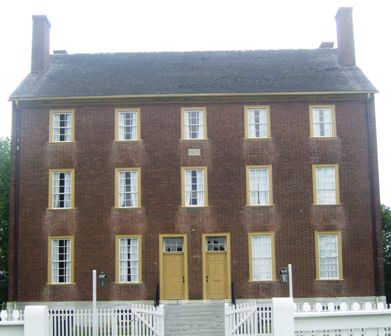 |
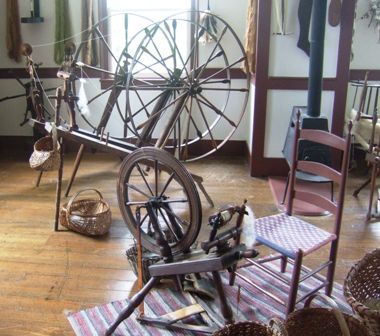 |
One of the houses was known as the 'sister's' house and it is here that the
needlecraft workshops are housed with spinning wheels and looms and
associated items. There are woodworking, metalwork, tinsmith shops etc in
other buildings. |
| There are several looms on display most of which had
been built in the colonies although probably to designs from England. The
docent was happy to chat with Jan (for hours) on the operation of the looms
and the things that they make today. Alas her colleague, who is the more
knowledgeable on their design and construction, was absent. | 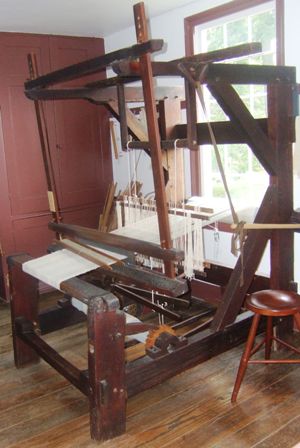 |
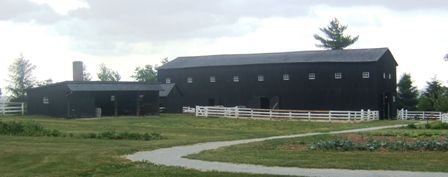 |
The barn is huge as befits a farm of several thousand acres. Today a few
animals are on hand to show the kids what they look like (and how they
smell!). |
| The communal houses are massive, much larger than
their fronts would lead you to believe. Small wonder that 80 people lived in
them in relative comfort. So what if you had to give up sex? They were
fairly strict about things so a bit of hanky panky in the barn was regarded
as rather more than a misdemeanour. It was enough to get you thrown out with
only the clothes you stood up in. You didn't get back your partner, kids,
land or any other goods you had chipped in when you joined. | 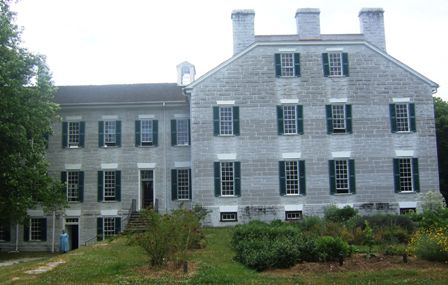 |
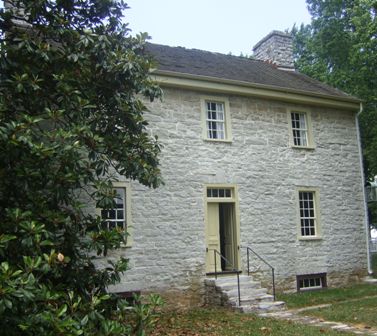 |
The quality of the houses really is superb and would be difficult to beat
today. They were built quite quickly which can be done if you can
concentrate on the task with enough manpower and have others to keep you fed
and supplied. The alternative was to try to build and farm at the same time.
Small wonder that most people lived at subsistence level in a one roomed
shack. |
|